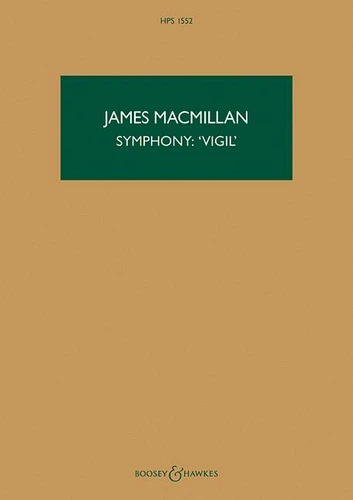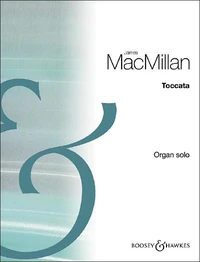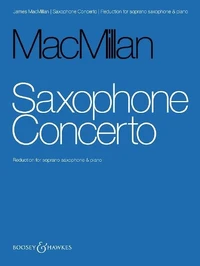Hawkes Pocket Scores HPS 1552
Symphony: 'Vigil'. Third Part of the Orchestral Triptych Triduum. HPS 1552. orchestra. Partition d'étude.
Par : Formats :
- Paiement en ligne :
- Livraison à domicile ou en point Mondial Relay indisponible
- Retrait Click and Collect en magasin gratuit
- Nombre de pages172
- Poids0.514 kg
- Dimensions21,0 cm × 29,7 cm × 0,0 cm
- ISBN978-1-78454-204-7
- EAN9781784542047
- Date de parution24/03/2017
- ÉditeurBOOSEY
Résumé
Symphony : 'Vigil' (1997) is the last of three interrelated works forming Triduum, commissioned by the London Symphony Orchestra, the other works being The World's Ransoming, for cor anglais and orchestra, and the Cello Concerto (both 1996). All three relate to the historical events and religious liturgies of the Easter Triduum, namely Maundy Thursday, Good Friday and the Easter Vigil. The symphony's first movement, 'Light', deals with the promise of a glimmer of light in the darkness.
The central movement, 'Tuba insonet salutaris' (Sound the trumpet of salvation), is based on the Exsultet melody sung at the Easter Vigil, described by Mozart as probably the most beautiful ever written. The final movement, 'Water', opens savagely but subsides towards the presentation of two conflicting principal materials - a wild, ecstatic dance followed by a slower, more mysterious texture, leading to a climax and a luminous, floating close.
Instrumentation : orchestra
The central movement, 'Tuba insonet salutaris' (Sound the trumpet of salvation), is based on the Exsultet melody sung at the Easter Vigil, described by Mozart as probably the most beautiful ever written. The final movement, 'Water', opens savagely but subsides towards the presentation of two conflicting principal materials - a wild, ecstatic dance followed by a slower, more mysterious texture, leading to a climax and a luminous, floating close.
Instrumentation : orchestra
Symphony : 'Vigil' (1997) is the last of three interrelated works forming Triduum, commissioned by the London Symphony Orchestra, the other works being The World's Ransoming, for cor anglais and orchestra, and the Cello Concerto (both 1996). All three relate to the historical events and religious liturgies of the Easter Triduum, namely Maundy Thursday, Good Friday and the Easter Vigil. The symphony's first movement, 'Light', deals with the promise of a glimmer of light in the darkness.
The central movement, 'Tuba insonet salutaris' (Sound the trumpet of salvation), is based on the Exsultet melody sung at the Easter Vigil, described by Mozart as probably the most beautiful ever written. The final movement, 'Water', opens savagely but subsides towards the presentation of two conflicting principal materials - a wild, ecstatic dance followed by a slower, more mysterious texture, leading to a climax and a luminous, floating close.
Instrumentation : orchestra
The central movement, 'Tuba insonet salutaris' (Sound the trumpet of salvation), is based on the Exsultet melody sung at the Easter Vigil, described by Mozart as probably the most beautiful ever written. The final movement, 'Water', opens savagely but subsides towards the presentation of two conflicting principal materials - a wild, ecstatic dance followed by a slower, more mysterious texture, leading to a climax and a luminous, floating close.
Instrumentation : orchestra





















